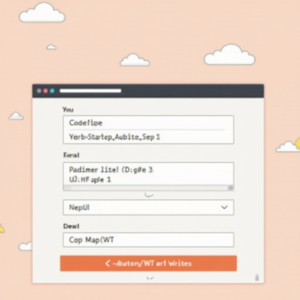
Introduction to CodeIgniter and PWA Development
CodeIgniter is a popular PHP web framework that enables developers to build scalable and maintainable web applications quickly. Progressive Web Applications (PWAs) are web applications that provide a native app-like experience to users, with features such as offline support, push notifications, and home screen installation. In this article, we will explore the comprehensive guide to CodeIgniter Progressive Web Application (PWA) development.CodeIgniter provides a robust set of features and tools that make it an ideal choice for building complex web applications. Its modular design, efficient routing system, and extensive libraries make it a popular choice among developers. On the other hand, PWAs have revolutionized the way web applications are developed and consumed, providing a seamless and engaging user experience.
Benefits of Building a PWA with CodeIgniter
Building a PWA with CodeIgniter offers numerous benefits, including:Improved user experience: PWAs provide a native app-like experience to users, with features such as offline support, push notifications, and home screen installation. CodeIgniter’s modular design and efficient routing system enable developers to build complex web applications quickly and efficiently.Increased engagement: PWAs are designed to provide a seamless and engaging user experience, which can lead to increased user engagement and retention. CodeIgniter’s extensive libraries and tools enable developers to build interactive and dynamic web applications that capture users’ attention.Enhanced security: PWAs are served over HTTPS, which ensures that all interactions between the user’s browser and the server are encrypted and secure. CodeIgniter’s built-in security features, such as input validation and CSRF protection, provide an additional layer of security for web applications.

Setting Up a CodeIgniter Project for PWA Development
To set up a CodeIgniter project for PWA development, follow these steps:Install CodeIgniter: Download and install the latest version of CodeIgniter from the official website.Set up the project structure: Create a new project folder and set up the basic structure for your CodeIgniter project, including the application, system, and public folders.Configure the database: Configure the database settings in the database.php file, located in the application/config folder.Install required libraries: Install the required libraries, such as the PWA library, using Composer or the CodeIgniter package manager.
Building a PWA with CodeIgniter
To build a PWA with CodeIgniter, follow these steps:Create a new controller: Create a new controller that will handle the PWA’s routes and logic.Define the PWA’s routes: Define the routes for the PWA in the routes.php file, located in the application/config folder.Implement the PWA’s logic: Implement the PWA’s logic in the controller, including the handling of offline support, push notifications, and home screen installation.Use the PWA library: Use the PWA library to simplify the development process and handle the complexities of PWA development.
Implementing Offline Support in a CodeIgniter PWA
To implement offline support in a CodeIgniter PWA, follow these steps:Use the Cache library: Use the Cache library to store the PWA’s data and resources, enabling offline access.Implement caching: Implement caching for the PWA’s routes and data, using the Cache library or a third-party caching library.Handle offline requests: Handle offline requests in the controller, using the Cache library to retrieve the cached data and resources.Use the Service Worker API: Use the Service Worker API to handle offline requests and provide a seamless offline experience.
Implementing Push Notifications in a CodeIgniter PWA
To implement push notifications in a CodeIgniter PWA, follow these steps:Use the Push API: Use the Push API to handle push notifications, enabling the PWA to receive notifications from a push server.Implement the Push API: Implement the Push API in the controller, using a library or framework that simplifies the development process.Handle push notifications: Handle push notifications in the controller, using the Push API to retrieve the notification data and display it to the user.Use a push server: Use a push server, such as Firebase Cloud Messaging or OneSignal, to handle push notifications and provide a scalable and reliable solution.
Implementing Home Screen Installation in a CodeIgniter PWA
To implement home screen installation in a CodeIgniter PWA, follow these steps:Use the Web App Manifest: Use the Web App Manifest to provide metadata about the PWA, including the name, description, and icons.Implement the Web App Manifest: Implement the Web App Manifest in the controller, using a library or framework that simplifies the development process.Handle home screen installation: Handle home screen installation in the controller, using the Web App Manifest to provide the necessary metadata and enable home screen installation.Use a icon library: Use a icon library to provide icons for the PWA, enabling users to add the PWA to their home screen and access it quickly and easily.
Conclusion
In conclusion, building a PWA with CodeIgniter provides numerous benefits, including improved user experience, increased engagement, and enhanced security. By following the steps outlined in this article, developers can build a scalable and maintainable PWA using CodeIgniter, providing a seamless and engaging user experience that rivals native apps.CodeIgniter’s modular design, efficient routing system, and extensive libraries make it an ideal choice for building complex web applications, including PWAs. The PWA library and other third-party libraries simplify the development process, enabling developers to focus on building a high-quality PWA that meets users’ needs and expectations.Whether you’re building a new PWA from scratch or migrating an existing web application to a PWA, CodeIgniter is an excellent choice. Its flexibility, scalability, and maintainability make it an ideal framework for building complex web applications, including PWAs.

